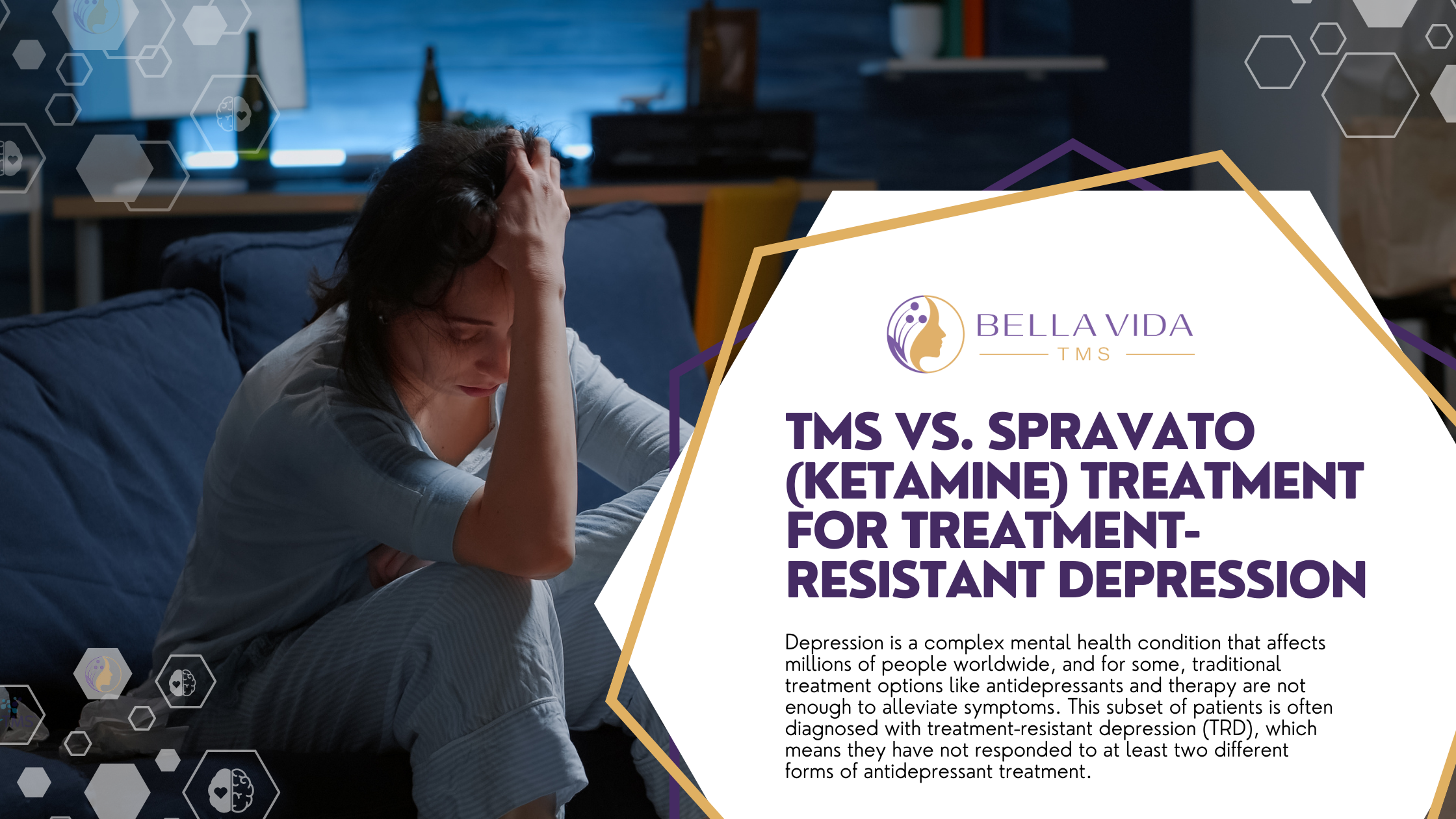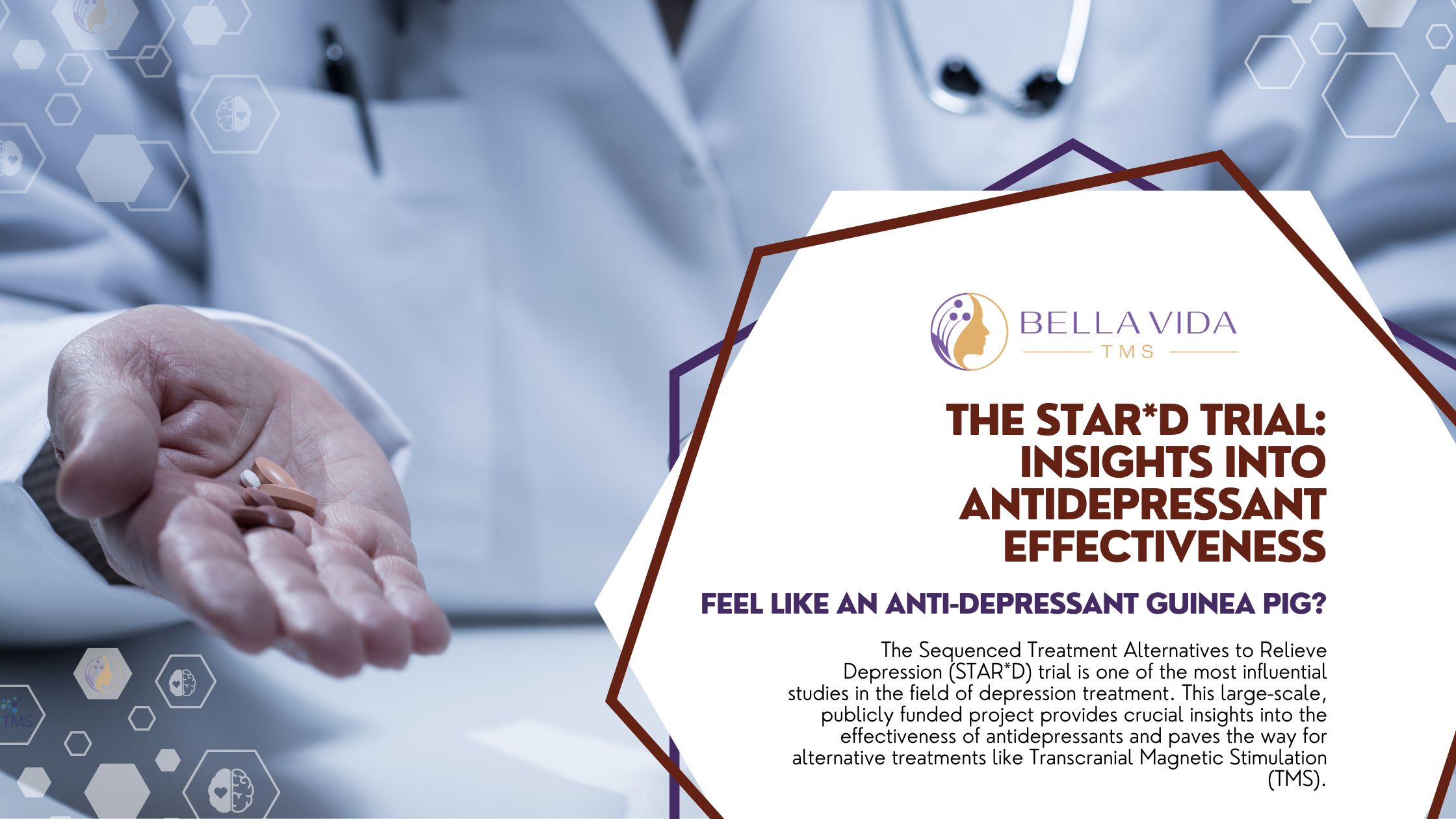Comparing TMS and Antidepressants for Depression
Depression doesn’t just make you feel sad—it can make everyday life feel impossible. For people in Phoenix, Glendale, Scottsdale, and Gilbert, the struggle is real and, sadly, all too common. According to the World Health Organization, over 280 million people worldwide suffer from depression. Yet many don’t realize there are more options than just medication. If you’ve been taking pills with little or no relief, it’s time to explore the powerful truth about TMS vs antidepressants—and why TMS might be the alternative to depression medication you’ve been hoping for.
“Mental pain is less dramatic than physical pain, but it is more common and also more hard to bear.” — C.S. Lewis
Depression doesn’t always look like tears and sadness. Sometimes it’s numbness. Sometimes it’s getting through the day pretending you’re fine. And for some, it’s trying one antidepressant after another with no real change. That’s called treatment-resistant depression, and it affects roughly one-third of people diagnosed with the condition. So, what can you do if medications haven’t helped?
This is where Transcranial Magnetic Stimulation (TMS) steps in. It’s a non-invasive, FDA-approved treatment that doesn’t involve medication—and it’s offering real relief to people who’ve struggled for years.
Understanding the Basics of TMS vs Antidepressants
How Antidepressants Work
Antidepressants are typically the first line of treatment for depression. Most work by adjusting the balance of chemicals in the brain—especially serotonin, dopamine, and norepinephrine. These chemicals help control mood, appetite, sleep, and more.
There are several types of antidepressants:
- SSRIs (Selective Serotonin Reuptake Inhibitors) like Zoloft and Prozac
- SNRIs (Serotonin and Norepinephrine Reuptake Inhibitors) like Effexor
- Tricyclics and MAOIs, which are older and often have more side effects
For some people, these meds can be life-changing. But for many, they fall short—or come with a heavy cost.
How TMS Works
Transcranial Magnetic Stimulation targets depression differently. It uses gentle magnetic pulses to stimulate the left prefrontal cortex, the part of the brain that regulates mood. Unlike medications, TMS doesn’t affect your whole body—it focuses directly on brain activity, helping “reset” the circuits that aren’t functioning properly.
This means TMS has fewer side effects, doesn’t require daily pills, and can lead to long-term improvement.
Side Effects and Safety: TMS vs Antidepressants
The Drawbacks of Antidepressants
Let’s be honest—antidepressants come with baggage. Common side effects include:
- Weight gain
- Sleep problems
- Sexual dysfunction
- Dry mouth
- Emotional numbness
- Increased anxiety at the start of treatment
Worse, stopping these meds often leads to withdrawal symptoms, sometimes called “discontinuation syndrome”, which can include brain zaps, dizziness, and mood swings. It’s no surprise many people are looking for a safer option.
TMS: A Safer Alternative?
TMS is considered very safe. It’s non-invasive, doesn’t involve drugs, and requires no anesthesia. Side effects are usually mild and include:
- Scalp discomfort
- Light headaches
- Tingling during sessions
And unlike medications, TMS doesn’t affect your entire body. There are no digestive issues, weight gain, or emotional flatlining. Most people can return to work or school immediately after a session.
In fact, the American Psychiatric Association now recommends TMS for patients who haven’t responded to at least one antidepressant.
Effectiveness: What the Research Tells Us
Medication Isn’t Always Enough
According to the STAR*D trial—the largest study on antidepressant effectiveness—only about 30% of patients achieve full remission with their first antidepressant. Each new med tried after that has lower success rates.
That means millions of people are stuck in a cycle of trying new drugs, adjusting doses, and enduring side effects—all without guaranteed relief.
TMS Gets Results
Clinical studies show that 60% of patients treated with TMS report significant improvement, and 1 in 3 go into full remission. Even better? TMS results are often long-lasting. Many patients report feeling better for months or even years after completing a treatment course.
For people in Phoenix and surrounding cities, this can be life-changing—especially if they’ve already cycled through multiple meds.
Lifestyle Impact: Living with TMS vs Living with Antidepressants
Taking a Pill vs. Rewiring the Brain
Daily medications become part of your routine—but also part of your identity. You may always wonder if it’s the real you or just the meds keeping things under control.
TMS doesn’t just mask symptoms—it helps heal the brain from the inside out. Over time, brain function improves naturally, reducing the need for long-term intervention.
Emotional Clarity
One of the most common complaints about antidepressants is emotional dullness—a feeling like you’re not sad, but not really happy either. With TMS, patients often say they feel more like themselves—clearer, more energized, and more emotionally present.
What’s Best for You?
Everyone’s journey with depression is different. For some, antidepressants are helpful. But if you’ve tried them and still feel stuck—or if you’re tired of the side effects—it’s worth exploring alternatives.
When to Consider TMS:
- You’ve tried two or more antidepressants with little or no relief
- You can’t tolerate the side effects of medication
- You want a non-invasive, drug-free solution
- You’re looking for long-term improvement—not just symptom control
“There is hope, even when your brain tells you there isn’t.” — John Green
If you’re ready to reclaim your life, think beyond the pill bottle. TMS isn’t just a trend—it’s a scientifically backed, FDA-approved treatment that’s helping thousands in Arizona and across the country.
Sources:
- NHS – Side effects – Antidepressants
- Bella Vida TMS – Transcranial Magnetic Stimulation
- Harvard Health – What are the real risks of antidepressants?




